By Francis Lankester
Published on Egyptological, December 7th 2011, Journal Edition 2.
Abstract
The ‘Scorpion’ Mace-head is one of the most significant objects from the main deposit at Hierakonpolis. Unlike the Narmer Mace-head, it is not a complete mace-head but only part of one. Apart from the dominant figure after whom the palette is named, the surrounding scenes are partial; however excellently these have been conserved. This makes the object even more enigmatic and difficult to interpret than usual in the context of the development of Early Dynastic royal iconography.
This article re-examines the evidence and suggests an alternative identification for King Scorpion.
ADDENDUM: Both Baumgartel (1966) and Arkell (1963) have also comprehensively undermined the attribution of the mace to Scorpion, but this has not been generally accepted and it is now time to renew the debate.
Introduction
The ‘Scorpion’ Mace-head (Figures 1 and 2) is one of the most significant objects from the main deposit at Hierakonpolis. Unlike the Narmer Mace-head, it is not a complete mace-head but only part of one. Apart from the dominant figure after whom the palette is named, the surrounding scenes are partial; however excellently these have been conserved. This makes the object even more enigmatic and difficult to interpret than usual in the context of the development of Early Dynastic royal iconography.
Most commentators have identified the king depicted on the mace-head as ‘Scorpion,’ based on two factors:
- firstly, the rosette and scorpion to the right of the figure in the White Crown; and
- secondly the lack of a serekh which denotes the ruler.
Therefore, this king is usually placed before both King Ka, whose title in a serekh has been found in Cemetery B (Abydos), the Delta, Adaima and Tarkhan, and before Iry-Hor whose title is not in a serekh. Based on the position of tombs in Cemetery B in the Umm el Qaab, the sequence-Scorpion, Iry-Hor, Ka, and Narmer has found wide acceptance (Jimenez-Serrano, 2002: 3; Needler, 1984 in Hassan et al 2006: 689), although ‘Scorpion’ is sometimes placed after or contemporary with Ka (Wilkinson 1999: 27).
The accepted sequence of Dynasty O rulers presents a number of problems. The iconography on the mace-head bears many stylistic similarities to that of the Narmer Mace-head and Palette, yet Scorpion is often placed three reigns before Narmer. Moreover, no tomb has been found for a King Scorpion II, although it has been suggested that either the unassigned Tomb B50 or Tomb U-J at Abydos (Dreyer, 1990: 71) was his burial place. In contrast, to overcome the stumbling block of the style similarities of the Scorpion Mace-head to the Narmer Palette and Mace-head, it has also been proposed that he was a ruler of Hierakonpolis and thus partly a contemporary of Narmer, the founding king of the First Dynasty (Wilkinson, 1999: 57). It is significant that apart from the mace-head, a major power-fact, there is not a single artefact such as pottery or a seal which can be assigned to this ruler with confidence. Even the little known Dynasty 0 kings Iry-Hor and Ka are better attested. Indeed, Raffaele (2001) concluded that “the slight traces of Scorpion II hinder any safe reconstruction about the place of origin of this obscure sovereign and his role in the late predynastic history.” It will be argued here that, on the contrary, he is well known, but has been obscured.
The Heart of the Problem: The Scorpion and the Rosette
The presence of the rosette and scorpion to the right of the figure wearing the White Crown (Figure 3) is the main reason for the identification of a ‘King Scorpion’. The rosette, a flower head with well-delineated veined petals, is assumed to represent a ruler (Smith, 1992), although the number of petals is not significant, ranging from four, five and seven on the Gebel Tarif Knife Handle, five on the Metropolitan Museum knife handle, to seven on the Scorpion Mace-head and six and seven on either side of the Narmer Palette, and even nine on the Qustul incense burner. It is suggested that the rosette motif was borrowed from Susa (Smith, 1992: 242), where it appeared in contexts symbolising control of wild animals. On Egyptian examples it has the same context, being copied directly in association with snakes (Petrie and Berlin Museum knife handles, Davis, 1992: 65). It can also be seen on the Davis Comb and Brooklyn Knife Handle (Davis, 1992: 49 & 51) where, along with animals which include dogs and (cat)fish, it seems to shepherd along neatly organised rows of creatures. It therefore emphasises power over, and control of, the wild. On the line-drawing reconstructing the Metropolitan Museum knife Handle a five-petalled ‘rosette’ (this is not clear) is situated in front of a figure seated in a boat wearing a White Crown. The nine-leafed rosette on the Qustul incense burner is placed to the left of a falcon perched on a building (which is not a serekh) in front of the figure in a White Crown. The context on the Narmer Palette is different in that it only appears next to the king’s sandal-bearer, while its association with a scorpion is unique to the Scorpion Mace-head.
A serekh identifying the ruler does not appear next to the figure with the White Crown on the Narmer Palette, but the catfish and chisel without the serekh frame do identify Narmer wearing the Red Crown on the recto. The serekh is also seen on the Narmer Mace-head, on which only the king wearing the Red Crown is present. The examples of a figure with the White Crown from Aswan (Hendrickx et al. 2009: 170) and on the Metropolitan Museum Knife Handle [which is very badly abraded and where a rosette is recorded in the line-drawing], all lack a serekh identifying the ruler. The latter has a papyrus clump with a head akin to a similar motif on the Narmer Palette and may thus be near in date to it. We therefore need not necessarily expect to see the name of the ruler adjacent to a White Crown figure at this time. There is a Narmer serekh in the top register on both sides of the Narmer Palette, but this is a flat object and one where the symmetry of the palette top is notable. The Scorpion Mace-head does not lend itself to this form, and also concerns a somewhat different subject in the section which has been conserved.
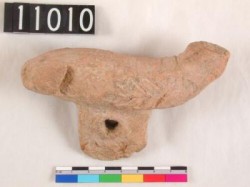
Figure 4. Scorpion figurine with tang (UCL 11010). Copyright Petrie Museum of Egyptian Archaeology (UCL)
The rosette never became a hieroglyph (although it may have survived as the emblem of the goddess Seshat: Wainwright, 1941; Schneider, 1997). Moreover, although it might have had a phonetic value, it cannot be definitively read since there are so few usages and because it falls out of the writing repertoire after Narmer. It should perhaps be seen as a symbol of sovereign power (Anselin, 2005). The rosette can best be compared to a symbol of royalty such as the fleur-de-lys. The fleur-de-lys cannot be read as ‘king,’ although it represents royal status and power, and may be emblematic, artistic, heraldic, symbolic and political at the same time. Thus, the rosette can signify ‘royal,’ but not equal ‘king’ in a reading of ‘King Scorpion.’ Furthermore, on the Narmer Palette and Mace-head the rosette is only used to identify the sandal bearer, not the king. On an object such as the Scorpion Mace-head, with so many parallels to the Narmer Palette, the rosette is therefore unlikely to refer to the ruler’s name. The rosette on the Scorpion Mace-head is above the scorpion after which the palette has traditionally been named. However, this scorpion is unique on such media with what appears to be a wedge-shaped extrusion at the bottom akin to a short handle. This indicates that the ‘scorpion’ represents an object such as a standard or emblem. Malek (1986: 29) perceptively described it as a tang for insertion into a pole or mast.
There is one comparable item, a pottery scorpion from the main deposit now in the Petrie Museum (Figure 4). For a later similar portrayal, we must look to the Dynasty III motifs within the Step Pyramid, where Djoser stands with mace and staff in the Red Crown in one panel and in the White Crown in the other. In the bottom right of the panel an anthropomorphised ‘Was’ sceptre holds a scorpion by a protuberance in one example and rests in a ring-like support on the ground in the other (Figure 5). Moreover, on the Scorpion Mace-head there are the dog with šdšd and the placenta/cushion standards. This iconography is the same as that on the Narmer Palette and Narmer Mace-head; albeit the bird standards are missing, probably because the Scorpion Mace-head is heavily damaged. Since the king is preceded by essentially the same set of standards, this suggests that the ruler is a ‘Falcon king,’ not a ‘Scorpion king.’ The identification of a separate ruler on the unique and limited basis of only paying attention to the rosette and scorpion (emblem) is therefore unsafe.
There is a context of numerous examples of a scorpion being included as a royal power fact. Firstly, a scorpion holding a hoe is one of the royal aspects on the Towns Palette where wild animals associated with the ruler- a bestiary of power, either hack up or conduct a ceremony regarding walled settlements (Figure 6). Secondly, in the Hierakonpolis Main Deposit there are thirty-one inscriptions, figurines or vessels with a representation of a scorpion including alabaster bowls with scorpion plus upturned ‘ka’ arms, a motif seen in sites from Upper and Lower Egypt (Hendrickx et al, 1998: 26-31). There is also a limestone vase with four elements also seen on the Scorpion Mace-head: the bird on a crescent, the scorpion, the bow and the plover/lapwing-the latter both with and without a crest.
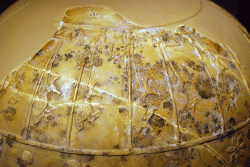
Figure 7 - Rekhyt (plover) birds hanging from standards on the Scorpion Mace-head, Ashmolean Museum. By Francis Lankester
Here, on the Scorpion Mace-head (Figure 7) and on a fragment of a palette the plover is shown with wings completely furled and not visible, rather than later in the dynastic period where overlapped wings indicate the Rekyht’s powerlessness. On the limestone vase from the Main Deposit the animals march in neat rows, as on a number of probably contemporary ivories and knife handles (Figure 8).
The ruler’s absolute control of all his enemies is accentuated on the Scorpion Mace-head by the plovers hanging by the neck from the standards, whose insignia probably represent aspects of the ruler, although it has been suggested that they are component areas of his domain. Both mace-head and vase therefore fit comfortably within the context of the ruler’s domination and control over wild animals, utilising the power of wildness and on occasion appearing as a wild animal-as on the Bull, Towns and Narmer palettes.
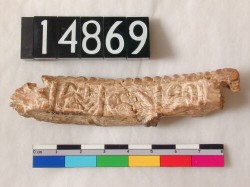
Figure 9. Ivory dish rim with falcon and scorpions (UC14869). Copyright Petrie Museum of Egyptian Archaeology, UCL
Additionally, there is the image of three scorpions associated with a falcon standard added to the originally plain Abu el Umari Palette. The scorpions face the falcon standard in a symmetrical manner rather than hang from it, supporting the power of the falcon ruler. A fragment of a palette has a falcon with what may be scorpion limbs). An ‘ivory slip’ found in Aha’s tomb where a scorpion holds a ‘pick’ (perhaps a harpoon, is akin to the Narmer catfish grasping a mace – an object which may have been left over from Narmer, the previous ruler. In addition, a portion of an ivory dish combines a falcon and scorpions (Figure 9). The falcon appears to stand on a crescent, as on the Hierakonpolis vase and Scorpion Mace-head.
The power of scorpion symbolism could have an origin in the many examples of scorpions found in the sphere of Thinite influence, especially from the time of the ruler buried in Tomb U-J at Abydos leading up to the First Dynasty. The elite centres of Hierakonpolis and This were associated with the scorpion over a long period and the protective power of the scorpion continued into the dynastic era. A Scorpion cult’ over a considerable period is noted by the Hierakonpolis excavators (Hendrickx & Friedman, 2003) and scorpion images are prevalent in Tomb U-J, even leading to its attribution to a King Scorpion I (Dreyer, 1990). On the Davis Comb and Brooklyn Museum Knife Handle a catfish controls ordered rows of animals. Two labels portray the king as the catfish holding stick and mace, while on the Narmer Palette he appears as a bull demolishing a town wall (and the ruler is probably also personified as a lion, since the Towns Plette is arguably contemporary). The scorpion and the catfish are from different environments, but they are allied. The catfish, which constitutes part of Narmer’s titular, is a large (up to 6 feet long) and particularly aggressive species, with serrated fin rays which can deliver a severe wound when locked in place (Bruton, 1996: 3). Some catfish also excrete a poisonous protein from their fin, akin to a sting. It is therefore particularly appropriate that a dangerous, and indeed poisonous, animal such as a scorpion should be associated with Narmer. In this sense, the catfish is a scorpion of the water, and the scorpion a catfish of the earth (after Anselin, 2005). The goddess Selket (srk.t-also srk ‘to open a road or way’) is noted as causing one to breathe (Anselin, 2005) . Selket is not attested by name before the Pyramid Texts, so perhaps we here see some of the cultic character later attributed to her. We can see the arachnid’s power as opening the airway-perhaps as a counterpoint to a scorpion’s bite whose venom makes the victim short of breath. However, the presence of the two fans behind the wearer of the White Crown on the Scorpion Mace-head also suggests the passage of air and ‘breath.’ The two large fans shelter the king very closely; indeed, his head overlaps the front fan. Immediately in front of the king’s face, and at the same level as the fan heads, is the scorpion emblem. Thus, the ruler has protection and breath/life both in front and behind.
Narmer is the last ruler to be shown in the form of a wild animal. From the second ruler, Aha, the king is inextricably linked to the falcon Horus, but he is never again portrayed in animal form. On the Narmer Palette the falcon holds the king’s enemy for him by a rope to the nose, akin to the standards with arms holding prisoners on the Battlefield Palette. From then on in the First Dynasty the king’s name is expressed directly in relation to Horus: ‘Horus the Fighter’ (Aha), ‘Horus Endures’ (Djer), ‘Horus Flourishes’ (Djet), ‘Horus Spreads’ [his wings] (Den), ‘Horus Companion of the Corporation’ [of gods], (Semerkhet), ‘Horus Raises’ [his arm to strike] (Qa’aa), (Wilkinson, 2000: 26). The falcon on the Aha serekh holds the mace and shield in the upper register, like the large falcon on the Narmer Palette securing the papyrus clump possessing a head. After this time, there is no requirement for such a close physical relationship on the titular.
By the middle of the dynasty even the name of Narmer may have been re- interpreted within this framework as ‘Horus the Dappled’-the distinctive near sunset or sunrise sky (Figure 10) which could look like the wings of the falcon transcendent over the heavens (Wilkinson, 2000: 26). Royal domain names placing Horus (and therefore the king) as the leader among the corporation of the gods, and also likening him to a star, confirm this move to a cosmic concept of royalty away from depicting the ruler as a powerful and aggressive wild animal (Wilkinson, 1999: 121). The iconography of the Scorpion Mace-head, Narmer Palette and related objects therefore together conform to the earlier ‘wild animal phase’ of the king, rather than the later cosmic conception.
Stylistic Comparisons Refuting the Existence of a King ‘Scorpion’
We must remember that since only about 40% of the original mace surface has survived, much of the context for the scene in which the figure wearing the White Crown stands tall is now lost to us. However, even on what remains stylistically the parallels to the Narmer Palette and Mace-head are numerous. Firstly, not every Early Dynastic ruler wears a false beard so variations in the representation of ruler(s) wearing the White Crown on Early Dynastic objects are not significant, although the Scorpion Mace-head line-drawing most commonly seen in publications shows the king without a beard, close examination arguably reveals a trace of one (see Figure 3). Leaving this out has accentuated the perceived differences between the Scorpion Mace-head and Narmer artefacts. Secondly, the papyrus plants, the women in procession, and the standard-bearers above right of the king all rest on a partial register line, as on the Narmer Mace-head, and the line of ‘standards’ on a continuous one. On the Narmer Palette, allegedly much later than the ‘Scorpion’ Mace-head, the sandal-bearer and the bull stand on their own partial register lines, while the King’s feet are on the main line. The King on the Scorpion Mace-head stands on the line of the channel bank, which acts as a ground level. As on the Narmer Palette, he dominates the centre of the object. Thus, although the palette has a flat surface and the mace-heads rounded ones, they all have the partial register line feature in common. Thirdly, there are two standard-bearers on the Scorpion Mace-head with four on the Narmer Mace-head and Palette, but the dog and the ‘cushion’ or ‘placenta’ are the same as on the palette and mace-head. Common to all three objects, the standard poles also all have streamers. While those on the Narmer Palette have a cross-lined detail, those on the two mace-heads do not, probably because of the greater ease of carving finely on a flat surface. Although there are only two standards on the Scorpion Mace-head, there is room for two more to the right where the rest of the scene has been destroyed. Although a large foot is often reconstructed at this point in line drawings of the mace-head, it is not clear such an element exists. In addition, there are two similar fan carriers on the Scorpion Mace-head and the Narmer Mace-head. The bottom of the fans on both objects is angled in the same way. Another similar detail, this time compared with the Narmer Palette, concerns the twin shoulder tie seen on the figure labelled ṯt in front of Narmer wearing the Red Crown. One of these ties survives on the figure standing behind the basket carrier on the Scorpion Mace-head, suggesting it is an official from the same royal court.
A large standing figure wearing the Red Crown has been proposed opposite the ruler with the White Crown (Ciałowicz, 1997: 12), but several factors weigh against this: there is little room for a large figure facing the second standard-bearer and a third and fourth bearer are more probable (Figure 11); and it is logical to assume that the other two standards could have been present – the cushion/placenta and dog being preceded by the two bird standards as on the Narmer Palette (while the order is reversed on the Narmer Mace-head). In any case, on royal objects from this period it was not necessary to have the full set of four ‘Followers of Horus’ standards which there is on the Narmer Palette and Narmer Mace-head. There are only two in the rock-art scene at Gharb Aswan (unclear emblem followed by canine, Hendrickx et al 2009: 170), a single falcon on a Narmer label, another single falcon standard on a label of Aha, a single canine on the Den ‘First Smiting of the East’ label (Jimenez-Serrano, 2002: 84, 62 & 92), and a small bird and falcon on a sealing of Den from the tomb of Merneith. Indeed, only the dog (Sed/Wepwawet) and cushion/placenta standards are present in the Djoser Step Pyramid panels (Friedman, 1995:3). Regarding the row of standards round the top of the Scorpion Mace-head, there are the three-peak mountain sign, two separate similar canines, and another with the šdšd in front from which hang Rekhyt birds (plovers). Then there is a gap and the remains of three standards, from each of which hangs a bow. The only distinguishable creature atop one of these standards on the right is a bird on a crescent. On the left there are five complete standards, and indications of two more. But there is space for more both to the left and right. The presence of the three bows, with plenty of room for more to the right where the conserved section ends, might suggest that we have here the earliest reference to the ‘Nine Bows’ – enemy territories outside the borders of Egypt.
The reconstruction of the tall figure in the Red Crown is unlikely, not only because there is no clear evidence for a large foot facing left on the edge of the conserved part, but because it would break the register line around the top of the mace. However, the postulation that there was originally a figure wearing the Red Crown on the complete mace can be supported. On the Narmer Mace-head the king in the Red Crown is seated on a dais. Thus if the White Crown figure on the Scorpion Mace-head was balanced by a Red Crown figure, there may have been either this scene, or one like that from the Narmer Palette with the king in the Red Crown standing in order to view prisoners. The activities on the left of the surviving surface support the contention that there was such a scene. There we see a row of women clapping and probably dancing with one leg in the air, since no second grounded foot is seen. Above is one complete sledge carrying a seated figure, with a trace of another in front (Figure 12). Although the complete one lacks a canopy, it resembles the figure on a sledge on the Narmer Mace-head. They appear to constitute part of a procession, perhaps the scene comparable to that on the Narmer Mace-head where the king on a dais sits opposite a figure or statue on a sledge. In this respect, we may see more of the ceremony which usually accompanied the king when he wore the Red Crown. Indeed, the two sledges might each carry a member of the royal family as witness to the ceremony (Logan, 1999: 264). A figure with what may be a small fan stand behind the rear sledge stands, suggesting it carries a living person rather than a statue.
Turning to the figure of the king, both the way the king’s tunic and the bull’s tail (with the hairs indicated by identical wavy lines) are the same on the Scorpion Mace-head and Narmer Palette. Both figures are also shown with toenails. On the Narmer Palette, Narmer wearing the White Crown has a slightly more refined nose than with the Red, whose stubbier nose is more akin to that of ‘Scorpion.’ The delineation of the eye is the same on both the royal and sandal-bearer figures on the Scorpion Mace-head, Narmer Palette and Mace-head (and the Bull Palette). The royal figures on the Scorpion Mace-head and Narmer Palette also have detailed eyebrows. Indeed, the face and ears of ‘Scorpion’ are more detailed and finely carved than ‘Narmer’ on the Narmer Mace-head. Regarding the White Crown the Narmer Palette example tapers more narrowly at the top than that on the Scorpion Mace-head. There may be two reasons for this. There are only a few illustrations of the White Crown in the Predynastic and Early Dynastic periods, but over a comparatively short time in the First Dynasty the form changed to having a cone-shaped base with a small bulbous feature at the top in the reign of Den. Thus, a difference between rare depictions over time is not unexpected. There may be an even simpler explanation. The Narmer Palette is flat and easier to work on, while the Scorpion Mace-head has a curved surface and may have been harder to carve. On the Wadi el Humur inscriptions, which record a mining expedition in Sinai, Den is depicted twice wearing the White Crown (Tallet, 2010: 98). In one case the top of the crown is considerably more elongated than the other. So the exact shape of the crown may not have been important, or the surface on which the image creator worked could have affected how it was depicted. The small difference in form between the crown on the Scorpion Mace-head and Narmer Palette may therefore be due to these factors.
Chronology of the ‘Scorpion’ Macehead
An earlier date for the Scorpion Mace-head than the Narmer Palette has been proposed because of the presence of signs atop the standards which are present on Naqada II c/d pottery, such as the ‘Min’ symbol. However, this sign is present, with its feather, on the Bull Palette and the Coptos Colossi (Williams, 1998: 38). The Bull Palette, with a register line, crenellated or towered towns, curly haired enemies with a long rectangular beard and a bull with carefully drawn muzzle and eye, has a strong stylistic relationship to the Narmer Palette and this suggests that they are contemporary. In addition, a First Dynasty sealing combines the ‘Min’ symbol and the bird on a crescent (Emery, 1961: 195) and two Narmer sealings from Tarkhan, (Figure 13) also have the ‘Min’ standard. Therefore, the ‘Min’ symbol continued into the era of Narmer, and the Bull Palette, Scorpion Mace-head and Narmer Palette can all be contemporary. Moreover, if we do indeed have the Nine Bows, then it is highly unlikely that the Scorpion Mace-head is aproduct of a mere regional power, but of the Upper Egyptian empire after ‘unification.’
It has also been suggested that the standard emblems or totems on the Scorpion Mace-head represent a coalition of allied powers who accomplished the Unification in support of the founder (Logan, 1999: 272). However, firstly it is unlikely that the towering ruler crushing all his enemies on the main deposit artefacts considered that he needed allies. All these objects on display emphasised the power of the king and the situation as it ought to be (probably being visible only to a restricted elite and the gods). Secondly, there is not such a clear link between the boat standards on D-Ware and those on the Scorpion Mace-head and other Dynasty O/I artefacts as it may first appear. There are twenty-eight basic types, with variants (Aksamit, 2006: 558).The two most common signs are the ‘Z’ (89 instances) and the ‘Arms’ (42), neither of which continue into Naqada III. The third most common: the ‘Mountain’ (24) is seen on the Scorpion Mace-head. The fourth most common: ‘Horns’ (25) does not continue, while the three remaining signs which do are rarely seen on the D-Ware (Graff, 2009: 173), that is ‘Min’ (8) and (one example each of 2 different birds-the first found at Hu, the second from Naqada) Additionally, the sign is sometimes attributed to the goddess Neith (Hendrickx, 1996), but if her emblem was originally a click beetle and two ties, it is unlikely that this sign is connected to her. The highest number of provenanced standard emblems comes from Naqada (26 on 16 vessels-mostly the ‘Mountain’ & ‘Z’), with 6 examples each from Badari (on 5 vessels), Mesa’eed (5 vessels) and Abydos (3 vessels) being the next highest in number of attestations. The rest do not continue into Naqada III and are scattered from Abusir to Nubia, generally occurring in only one to two instances (Graff, 2009). None of the signs which continue are found at Hierakonpolis, Mahasna, Nag ed Deir or Aswan, nor can more than a handful of D-Ware standards be easily matched to dynastic nome names. Moreover, evidence for the division into nomes (sepats) is only available from the Old Kingdom. It is thus very difficult to construct a coalition of allies from these signs (contra Logan, 1999 & Scarborough, 2011).
The Mace-head in its Early Dynastic Context
The correct attribution of the mace-head to Narmer assists in clarifying the circumstances surrounding the unification and establishment of Early Dynastic Egypt. Removing the non-existent King Scorpion argues against there being two equal and rival polities right up to the threshold of the First Dynasty (Wilkinson, 1999: 51). It also suggests that the concept of the Nine Bows representing Egypt’s enemies was conceived very early in the dynastic period. Moreover, with the addition of another large mace-head we have further insight into the ritual tasks the Early Dynastic ruler was expected to perform. On the large mace-head the king holds a hoe and is either covering over seed or opening a channel in order to water the dry ground and prepare it for planting. Thus, he is associated with the fertility and sustenance of the kingdom. At the same time the absolute dominance of the ruler is indicated by his towering stature and the symbols in the register around the top of the mace-head. The wingless Rekhyts hang by their necks from standards associated with kingship. Given that the plover is a bird which migrates in large flocks (Wyatt, 2011), it is appropriate that they are shown not only without the ability to escape, but humiliated and totally in the ruler’s power. He has the ability to easily end their lives. The bird also nests on mud flats and open scrub land, and is therefore an appropriate representation of the people of the Delta. These early Rekhyt are subtly different with no wings evident. Although in a later period the winged Rekhyt represents the Egyptian common people in relation to the elite ‘Pat,’ in the early period it would seem this is not so. The bows hanging from the other set of standards represent Egypt’s external enemies. Thus, the mace-head probably dates from a period of Narmer’s reign when the Delta had been absorbed and a concept of the ‘Other’ surrounding Egypt was well established.
The medium-sized (Narmer) mace-head may represent either an ‘Appearance of the King,’ or the early ‘Heb-Sed.’ In the latter case three figures, who may be bound, run between the d-shaped markers. If these represent the territory of the kingdom at this early date, then enemy prisoners (or ritual stand-ins) do the running rather than the king performing this in later periods, as shown on a label of Den (Jimenez-Serrano, 2002: 68). The king thus asserts his right to control of the kingdom. The early ‘Heb-Sed’ or ‘Appearance’ ceremony was perhaps also present on the large mace-head to the left of the dancers’ procession in the area now lost. Only a fragment of the small mace-head (called either the Little Scorpion or the Bearer’s Mace-head) survives. The figure is sitting and wearing the Red Crown, so this perhaps repeats the subject of the medium-sized mace-head. However, given that the large mace-head shows Narmer in the White Crown undertaking a different ceremony from the medium mace-head and the palette, this may even be another activity altogether. The male figures in procession may be bringing gifts to celebrate the ceremony.
The Narmer Palette is full of images of ritual involving domination and destruction. Not only does the king rest his hand with a seal on the head of a kneeling prisoner and brandish a mace above him, but enemies/rebels are beheaded and their virility destroyed. In addition, the king as a wild bull breaks down the walls of a town. Apart from the mace and stick-wielding catfish on an ivory cylinder and label (Jimenez-Serrano, 2002: 84 & 87), this is the last time the ruler appears as an animal. But it does link the Narmer Palette with the large mace-head where the standards control enemies. In future the king himself steps on the Rekhyt and the Nine Bows, literally treading Egypt’s enemies under foot and symbolically humiliating them every time he does so. If the maces and palettes were set up in the Hierakonpolis temple of Horus, then in a cultic context and in the presence of the gods they represented what happened, what happens and should always happen. They stress the duties of kingship and present the ruler as a towering, awe-inspiring, figure. With their many images of prisoners and crushed enemies they also assist in defining an Egyptian identity against the ‘Other.’
Conclusion
The identification of a King Scorpion in Quibell’s 1900 Hierakonpolis report has been enduring. This is rather surprising given the weight of evidence against an independent ruler whose iconography is so close to that of Narmer. Although its recovery along with stylistically similar objects clearly marked as belonging to Narmer ought to have led to its correct identification, the power of the rosette to mislead determined otherwise. It is also notable how little attention has been given to the partial nature of what has survived of this artefact. Twenty-five years ago Jaromir Malek drew attention to the vertical projection on the bottom of the scorpion and commented that “the likeliest candidate for the figure on the mace-head is Narmer”. Seen more appropriately as an emblem, and in its context of royal power and ritual, the scorpion sits comfortably within the cultic use of the arachnid seen from the time of Tomb U-J. The inability to ‘read’ the rosette, the presence of partial register lines, the lack of a need for four ‘follower’ standards-or for a serekh to identify the ruler wearing the White Crown, the continued use of the ‘Min’ standard in the early First Dynasty, the close stylistic similarities between the royal figures (albeit on differently-shaped media), and the probable presence of the ‘Nine Bows’ all argue against linking the Scorpion Mace-head to ‘King Scorpion’ This study argues that ‘King Scorpion’ is a creation of Egyptological tradition, and thus a mirage. The closeness in style and context between the ‘Large Narmer Mace-head,’ the Medium Narmer Mace-head, the Little Narmer Mace-head and the Narmer Palette lead to the conclusion that all of these objects should be assigned to the first king of the First Dynasty and that ‘Scorpion’ is indeed Narmer. Indeed, it is probable that the Towns and Bull Palettes also date from this period and to this ruler. Looking at the mace-head without the distraction of the misleading rosette (Figure 14), would the observer question that the First Dynasty founder is the subject? The ruler performing the necessary and expected rituals is the theme of all the Narmer power facts found at Hierakonpolis. Hopefully, the most likely identification will be recognised, and one day what was once called the Scorpion Mace-head will be displayed and labelled as the Large Narmer Mace-head.
Bibliography
Aksamit, J. 2006, ‘A New List of Vases with Cult Signs’, in Kroeper, K. Chlodniki, M. Kobusiewicz, M Archaeology of Early North-Eastern Africa, Poznan Archaeological Museum
Anselin, A. 2005, Le Scorpion et la Rosette: Essais de Lecture des Deux Sémogrammes Nagadéens, Apuntes de Archeologica,1, 15-33
Arkell, A. J. 1963, Was King Scorpion Menes? Volume: 37 Number: 145 Page: 31–35
Baumgartel, E.J. 1966, ‘Scorpion and Rosette and the Fragments of the Large Hieraconpolis Mace Head,’ in Zeitschrift für Ägyptische Sprache und Altertumskunde 93 (1966) 9-13.
Bruton, N.M. 1996, ‘Alternative Life-History Strategies of Catfish,’ Aquatic Living Resources, vol. 9, 35-41
Ciałowicz, K. 1997, ‘Remarques Sur la Tétes de Massue du Roi Scorpion,’ in Sliwa, J. (ed.) Studies in Ancient Art and Civilisation, 8, Prace Archeologiczne 59: 11-27, Krakow
Davis, W. 1992, Masking the blow: The Scene of Representation in Late Prehistoric Egyptian Art, Univ. of California Press, Berkley
Dreyer, G. 1990, ‘Umm el Qaab, Nachtunterschungengen im früzeitlichen Kőnigsfriedhof, 3/4 Vorbericht,’ MDAIK, vol 46, 53-90
Friedman, D. & Friedman, F. 1995, ‘The Underground Relief Panels of King Djoser at the Step Pyramid Complex,’ JARCE, vol. 32, 1-45
Hassan, F., Jimenez-Serrano, A. & Tassie, G.J. 2007, ‘The Sequence and Chronology of the Protodynastic and Dynasty I rulers,’ in Kroeper, K., Chlodniki, M. & Kobusiewicz (eds.), Archaeology of Early North-eastern Africa, Poznan Archaeological Museum
Hendrickx, S., Huyge, D. & Adams, B. 1987, ‘Le Scorpion en Silex,’ du Musée Royal de Mariemont, Cahiers de Mariemont, no. 28/29, 7-33
Hendrickx, S. & Friedman, R. 2003, ‘Gebel Tjauti Rock Inscription 1 and the relationship between Abydos and Hierakonpolis during the early Naqada III period,’ Göttinger Miszellen, 196, 95–109
Hendrickx, S. & Gatto, M.C., 2009, ‘A Late Predynastic-Early Dynastic Royal scene from Aswan (Upper Egypt),’ Sahara, 20, 147-150
Jimenez-Serrano A. 2002, Royal festivals in the Late Predynastic Period and the First Dynasty, BAR 1076
Kaplony, P. 1965, ‘Eine Schminkpalette von Kőnig Skorpion aus Abu Umuri (Untersuchung zur ältesten Horustitulatur),’ Orientalia, 34, 132-170
Logan, T. J. 1999, ‘Royal Iconography of Dynasty O,’ in Larsen, J. & Teeter, E. (eds.) Gold of Praise: Studies on Ancient Egypt in Honour of Edward F. Wente, Oriental Institute, Chicago
Málek, J. 1986, In the Shadow of the Pyramids, Univ. of Oklahoma Press
Needler, W. 1967, ‘A Rock-Drawing on Gebel Sheikh Suliman (near Wadi Halfa) showing a Scorpion and Human Figures,’ JARCE, 6, 87-91
Petrie, W.M.F. 1901, The Royal Tombs of the Earliest Dynasties, EEF, London
Quibell, J. 1900, Hierakonpolis, Part I, Bernard Quatrich, London
Quibell, J. & Green, F.W. 1902, Hierakonpolis, Part II, Bernard Quatrich, London
Raffaele, F. 2001, ‘Scorpion II,’ in Late Predynastic & Early Egypt, http: //xoomer. virgilio. it/francescoraf/
Scarborough, M. 2011, ‘The Political Geography of Late Predynastic Egypt,’ unpublished M.A. dissertation, University of Durham
Schneider, T. 1997, ‘“Rosette” und die Gőttin Seshat,’ SAK,’ vol. 24, 241-267
Smith, H. S. 1992, ‘The Making of Egypt: A Review of the Influence of Susa and Sumer on Upper Egypt and Lower Nubia in the 4th milennium BC,’ in Friedman, R. & Adams, B. (eds.) The Followers of Horus-Studies Dedicated to Michael Allen Hoffman, Oxbow Monograph 20, Oxbow Books, Oxford
Tallet, P & Ibrahim, M.R., 2009, ‘King Den in Sinai: the Earliest Monumental Rock Inscriptions of the Pharaonic Period,’Archeo-Nil, 19, 179-184
Wainwright, G.A. 1941, ‘Seshat and the Pharaoh,’ JEA, vol. 26, 30-40
Wilkinson, T.A.H. 1999, Early Dynastic Egypt, Thames & Hudson, London
Wilkinson, T.A.H. 2000, ‘What a King is This? Narmer & the Concept of the Ruler,’ JEA, vol. 86, 23-32
Williams B., Logan T. J. and Murnane W. J. 1987, ‘The Metropolitan Museum Knife Handle and Aspects of Pharaonic Imagery before Narmer,’ JNES, 46, no. 4, 245-285
Williams, B. 1988, ‘Narmer and the Coptos Colossi,’ JARCE, vol. 25, 35-59
Wyatt, J. 2011, ‘The Rekhyt,’ Egyptological,
/2011/06/the rekhyt-4162
Image Credits
Featured Image (Journal Edition Listing etc), Narmer Mace-Head, Copyright Jon Bodsworth
Figures 1,2 – Mace-Head, Ashmolean Musem, by Andrea Byrnes
Figure 3, Scorpion and Rosette, Ashmolean Museum, by Andrea Byrnes
Figure 4, Scorpion Figurine with Tang, UC11010. Copyright Petrie Musem of Egyptian Archaeology, UCL
Figure 5, Scorpion Image from Djoser Step Pyramid Complex, Redrawn and Copyright Kate Phizackerley from Friedman & Friedman, 1995: 3
Figure 6, Detail from Towns Palette, Cairo Museum. Copyright Francis Lankester
Figure 7, Rekhyt birds hanging from standards on the Scorpion Mace-head, Ashmolean Museum. Copyright Francis Lankester
Figure 8, Limestone vase from the Main Deposit, Hierakonpoli, Quibell, 1900: XIX. Copyright expired
Figure 9, Ivory dish rim with falcon and scorpions (UC14869). Copyright Petrie Museum of Egyptian Archaeology, UCL
Figure 10, ‘Horus the Dappled,’ -here the western sky, Copyright Francis Lankester
Figure 11, Standard Bearers on Scorpion Macehead. Photograph by Andrea Byrnes
Figure 12, Procession scene from the Scorpion Machead, Copyright Francis Lankester
Figure 13, Sealing from Tarkhan (UC35686). Copyright Petrie Museum of Egyptian Archaeology, UCL.
Figure 14, Detail of the Scorpion Macehead, Ashmolean Museum. By Andrea Byrnes
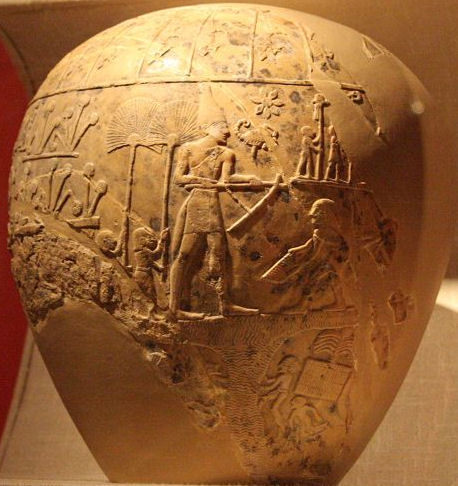
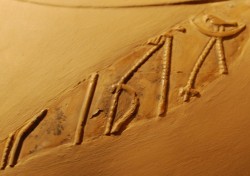
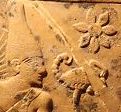

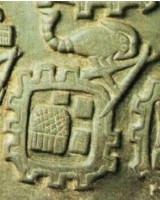

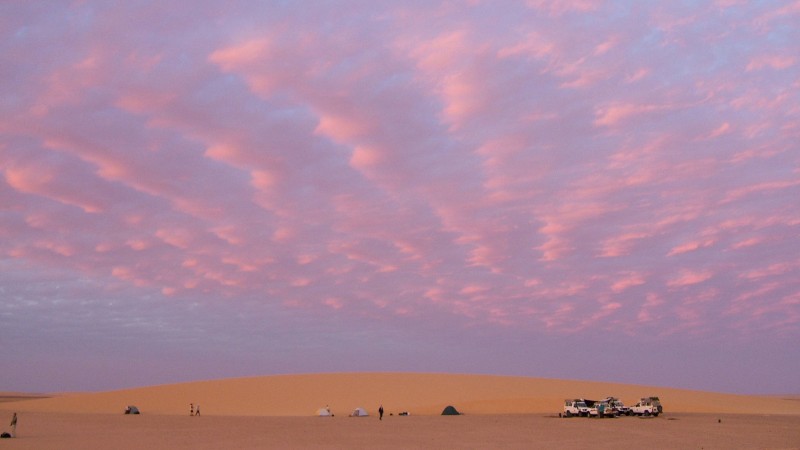
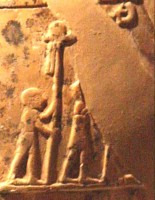
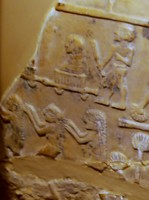
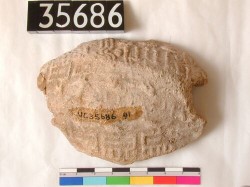
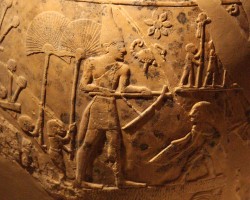
 By
By